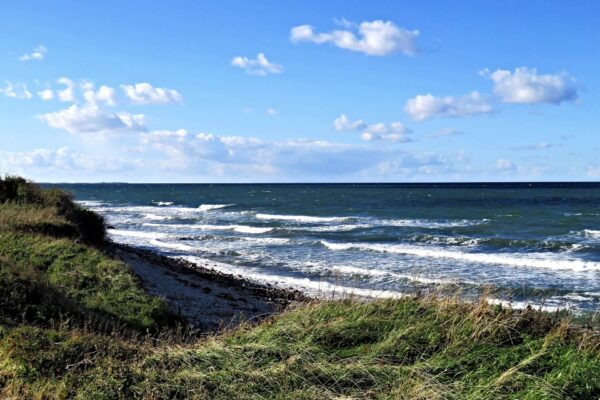Many people plan a trip to the Faroe Islands, especially on their way to Iceland. And there are good reasons for this. The archipelago in the Atlantic is known for its steep cliffs, breathtaking waterfalls and green roofs. Find out what you should know before travelling to the Faroe Islands, the best time to visit and what you can do there here.
Why go on holiday to the Faroe Islands?
The Faroe Islands are a group of islands in the North Atlantic. Faroese, Danish and usually English are spoken. The rugged Atlantic islands, originally called the “Sheep Islands”, are usually visited for their characteristic, beautiful nature. The inhabitants are called Faroese and do not see themselves as Danes, but as an independent people with their own language, history and flag.
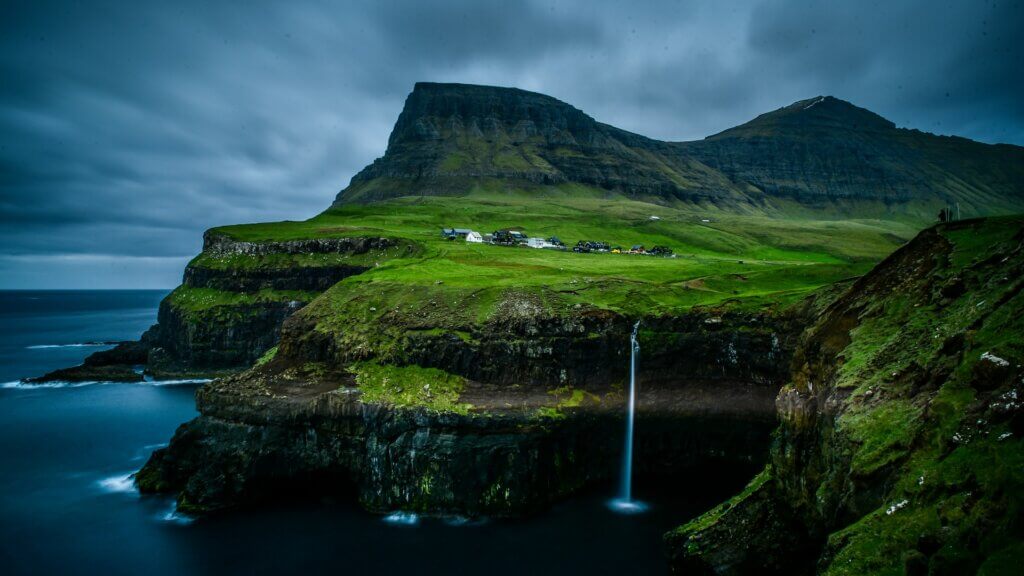
Where are the Faroe Islands?
The Faroe Islands formally belong to Denmark, but are largely autonomous. The 18 islands are located in the North Atlantic, around 1400 kilometres from the Danish mainland, between Scotland, Norway and Iceland. As with Svalbard and the Lofoten Islands, the Gulf Stream also plays a role here, as it moderates the climate. The capital Tórshavn is located on the largest island in the group, Streymoy. The island of Eysturoy also belongs to the central region of the Faroe Islands. There you will also find the mountain Slættaratindur, which at 882 metres is the highest mountain in the archipelago.
Faroe Islands: weather
The average temperature on the Faroe Islands is around 13° Celsius in summer and 3° Celsius in winter. As the island is so far north, you get a lot of sunshine in summer, while winter tends to be dark and cold. You also have to be prepared for constant changes in the weather. British soldiers even nicknamed the archipelago the “Islands of Maybe” during the Second World War.
What is the best time to visit the Faroe Islands?
The best time to visit the Faroe Islands is spring to summer. The climate is usually at its most pleasant from April to September. This means that the average temperatures during the day range from 9-13° Celsius. Rainfall is also at its lowest from May to August.
Faroe Islands: a selection of the most beautiful sights
Tórshavn: the capital of the Faroe Islands
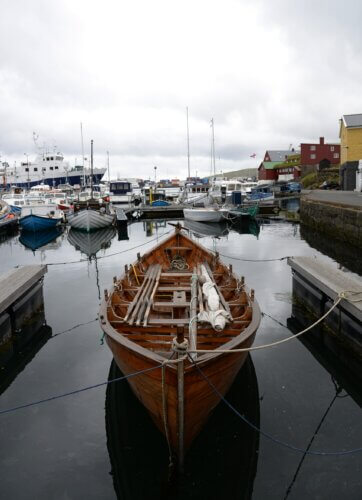
The first port of call for most people is the capital Tórshavn on the island of Streymoy. With a population of just 20,000, it is the smallest capital city in the world. The cultural life of the Faroe Islands mainly takes place there. The traditional red houses on the harbour are particularly popular with travellers. The government and prime minister even sit there. The city is an excellent starting point for your trip, as you can reach many destinations from here via ferry and bus connections. The buses in Tórshavn even run free of charge.
Popular destinations within Tórshavn include the old town of Tinganes with its 500-year-old houses, Tórshavn Cathedral, the lighthouse at Fort Skansin and Norðurlandahúsið, the Faroe Islands’ congress centre, which is particularly known for its characteristic architecture.
The island of Vágar
Vágar is home to the Faroe Islands’ only airport. If you start your journey here, there are several sights that you should not miss. These include the two largest lakes on the island, the Bøsdalafossur and Múlafossur waterfalls and the Trælanípa cliff.
Between Vágar and the island of Streymoy there is a 5 kilometre tunnel, the Vágatunnilin, underneath the Vestmanna Sound. This means you can easily reach the capital Tórshavn without a ferry or flight connection. A toll is charged depending on the vehicle travelling through.
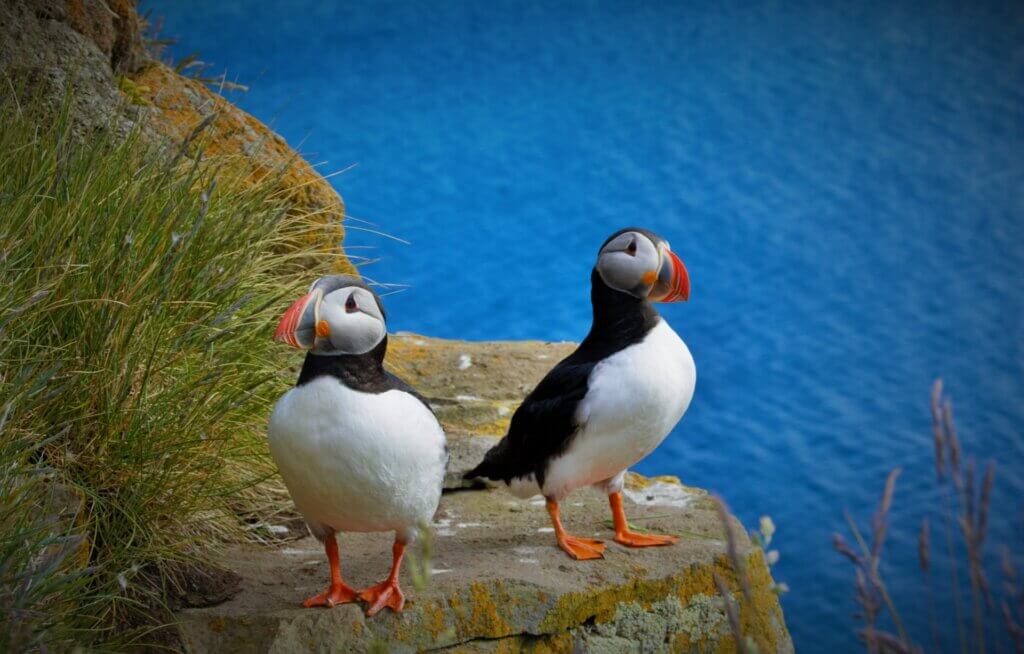
Puffin watching on Mykines
If you want to observe puffins in the wild, then you should pay a visit to the island of Mykines. This is possible, for example, via a ferry connection from Vágar. As the ferry departs twice a day, a day trip is a good idea.
To take the famous hiking trail to the famous observation point for the local puffin colony, a fee of around 14 euros is payable. The hike is 7 kilometres long and leads past the island’s famous lighthouse.
Breathtaking nature on Suðuroy
On Suðuroy, the southernmost island of the Faroe Islands, you can experience a very special landscape. The steep cliffs, green meadows and breathtaking mountains invite you to enjoy activities such as hiking, photography and even climbing. The island is also known for its special dialect and the hospitality of its inhabitants. You can reach Suðuroy in about two hours by ferry from Tórshavn.
Events on the Faroe Islands: the G! Festival and more

Despite the small population of the remote archipelago, the Faroe Islands are internationally renowned for some of their events.
These include the G! Festival, which attracts many visitors from home and abroad every year.
But other musical and cultural events are also organised on the Faroe Islands, such as the Summerfestivalur in Norðoyggjar, on the North Islands.
There are also a variety of events such as the Seafood Festival Á grynnuni or the Culture Nights in Tórshavn in June. Voxbotn, a pop festival in Tórshavn, also takes place in the same month.
G! Festival
The G! Festival is one of the largest and most famous open-air festivals on the Faroe Islands. It takes place on the beach in the village of Syðrugøta in the south-west of the Faroe Islands’ second largest island, Eysturoys. Not only Scandinavian artists are guests at the festival, but also musicians from all over the world. Some of the most famous acts in recent years include Rag’n’bone man and Alphaville.
Summerfestivalur
The other big festival on the Faroe Islands is Summerfestivalur. It’s all about pop, as the list of the most famous acts shows: Lucas Graham, Roxette, Mika, The Scorpions and many more have been guests here.
Accommodation on the Faroe Islands: camping or guesthouse?
There is a choice of accommodation on the Faroe Islands. You can either choose to camp or rent a hotel or guesthouse. Small guesthouses, bed & breakfasts and guesthouses are particularly well represented on the Faroe Islands.
Camping is a particularly good option in the summer months; however, you should bear in mind how quickly and violently the weather can change on the Faroe Islands. Many choose to use a caravan or motorhome to ensure greater protection from the weather. However, sleeping in a tent can also be very pleasant in summer.
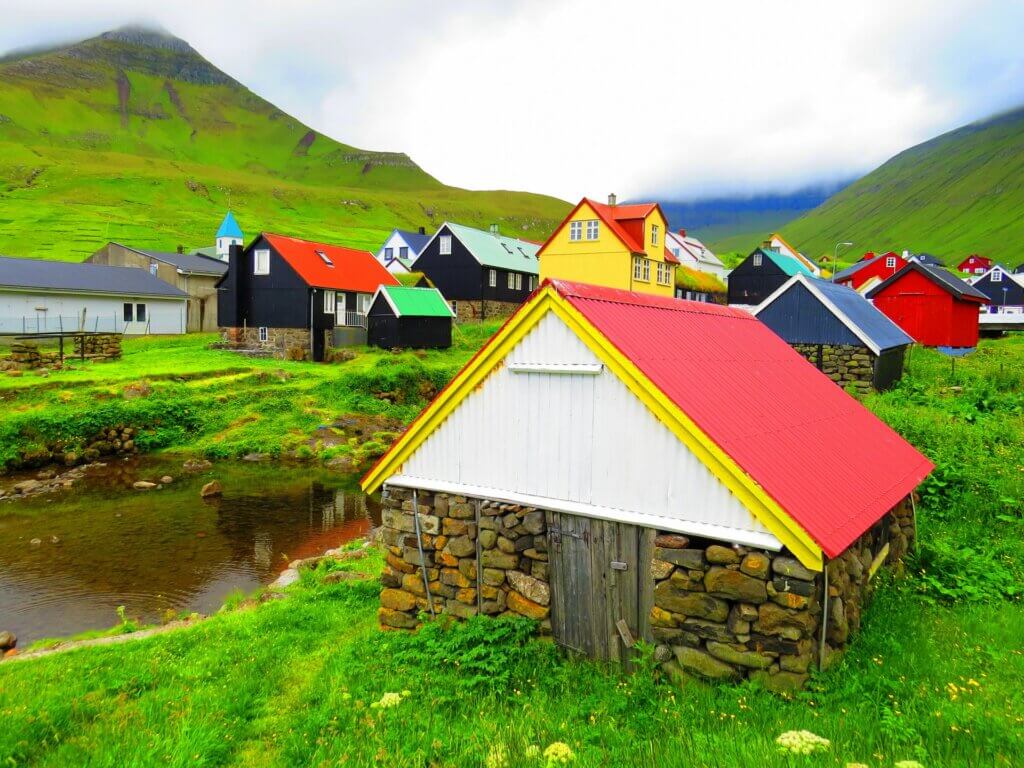
Faroe Islands: entry
While it is possible to enter the Faroe Islands as a citizen of an EU country or Switzerland on presentation of a valid photo ID, visitors from the UK need a passport. It should be noted that the Faroe Islands are not part of the Schengen area. A visa issued for Denmark, for example, is therefore not valid for the Faroe Islands unless it is explicitly stated otherwise. You can read everything else on the online portal of the Faroe Islands.
Travelling by ferry
The Faroe Islands can also be travelled to by ferry. The Smyril Line ferry line runs twice a week in summer and once a week in winter between Iceland, the Faroe Islands and the European mainland. The advantage of this is that you can take your own vehicle with you. The disadvantages, however, are the long journey time of around 38 hours and the price, which is generally higher than a flight. On the other hand, you save on car rent if you take your own vehicle with you.
Faroe Islands cruise
An alternative to a ferry trip is a cruise with a stopover on the Faroe Islands. Cruises that explore Iceland and Svalbard in particular often also visit the Faroe Islands. The advantage is that you can explore several Scandinavian destinations on one trip.
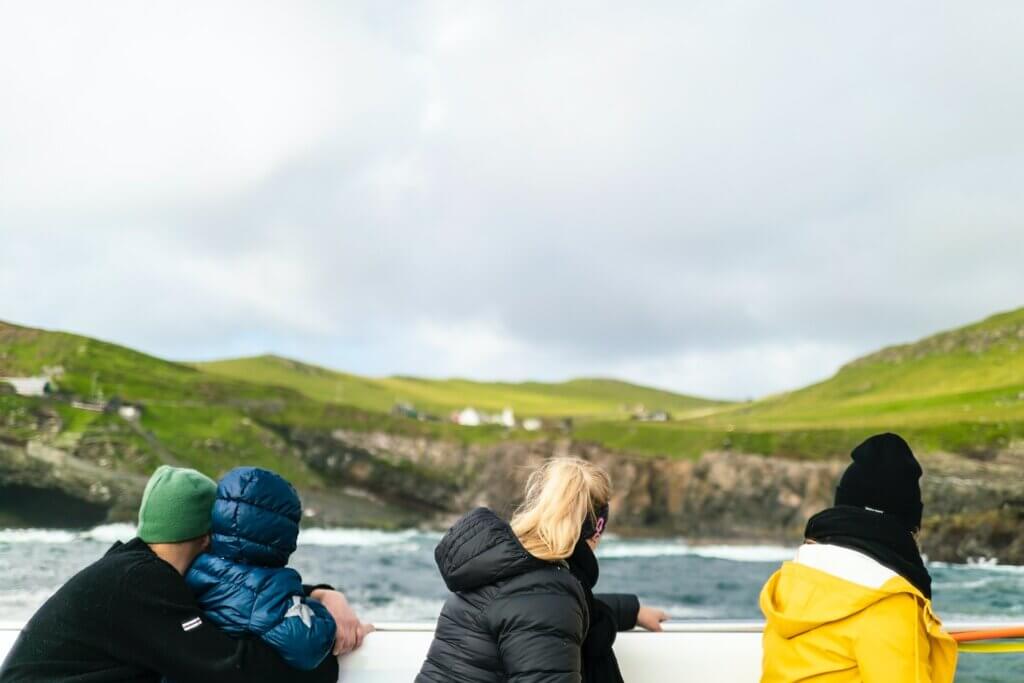
By plane to the Faroe Islands
Air travel is the fastest way to travel to the Faroe Islands. This is possible from the UK, for example from Edinburgh. The flight connection from Copenhagen is also popular. If you would like to combine your trip to the Faroe Islands with a city trip to Copenhagen, for example, this option is ideal.
